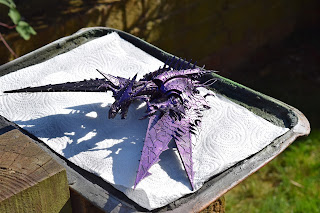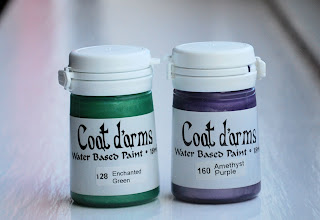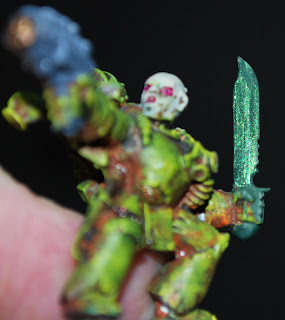A couple of weeks ago had an interesting chat with John Treadaway, whose views on many wargame issue are Sympatico with my own, about painting 'spearmen'.
In most wargame armies the bulk of the troops are the ordinary spearmen, the guys trailing a pike or carrying a musket. That is a lot of models to paint in similar colours. A block of soldiers are best given a coherent paint theme, even if they lacked it in real life, because it looks better on the wargame table and is useful for identifying units in games where the individual soldiers spread out a bit.
I confess, I am not a fan of the 'White Dwarf' paint techniques for wargaming models, as opposed to display models. You know the sort of thing, models painted by commercial artists in intricate detail to look good in close up photography. Please don't misunderstand me. I admire the skill of these artists immensely but their techniques are damn all use to wargamers for three reasons.
1. Most of us lack the artistic talent to recreate the techniques no matter how hard we try.
I can kick a ball but all the training in the world won't turn me into David Beckham.
2. Even if you could paint like a commercial artist, the results don't look particularly good on the wargame table.
The styles are too fussy, with too much detail. An army of display models look like a legoland house when viewed from a couple of metres away: all those colours and shades.
3. You don't have time.
And this is the final killer. How long would it take to paint the cannon-fodder, the major constituent of your army?
For example, I picked up a couple of packs of Westwind WWII British Army metal rifleman to populate my Bolt Action British force. That's them above.
I needed to paint them in a couple of evenings so this is the technique I have evolved over forty years of wargaming. Please, please, I am not setting up as some sort of artistic guru - I have all the artistic skills of a hagfish - but I am an experienced wargamer.
So this is how I paint 'spearmen'.
1. Clean, assemble, stick everything together.
2. Spray white: Vallejo white undercoat is good but there are plenty of others.
3. Cover the whole model with a sloppy diluted colour of the primary cover - Khaki in this instance - so it forms natural shading.
4. Paint in the additional colours: in this case flesh, mid-green (helmets), silver (bayonets) and dark brown (rifles, boots and base).
5. When properly dry, cover with a diluted dark brown wash.
6. White glue static grass to the base (or whatever) and give a light coating of Vallejo acrylic matt varnish.
Quick, simple, and minimal talent required but the models look OK en masse on the wargames table.
And then you go wargaming, which is the point of the exercise. Yes?


















































